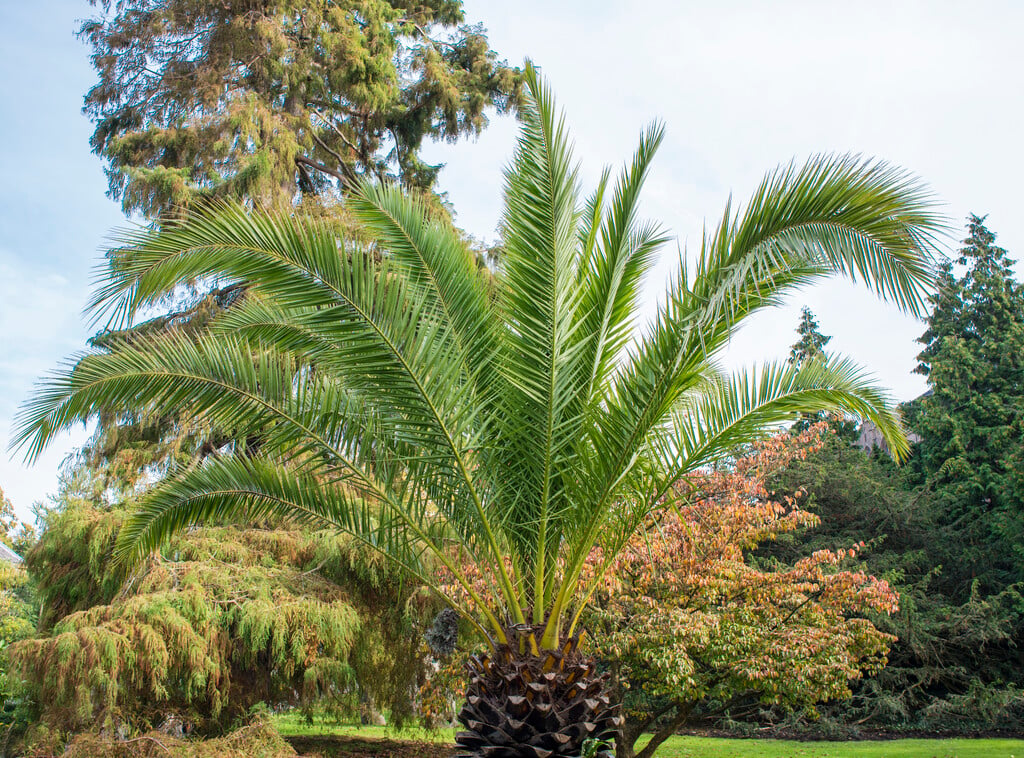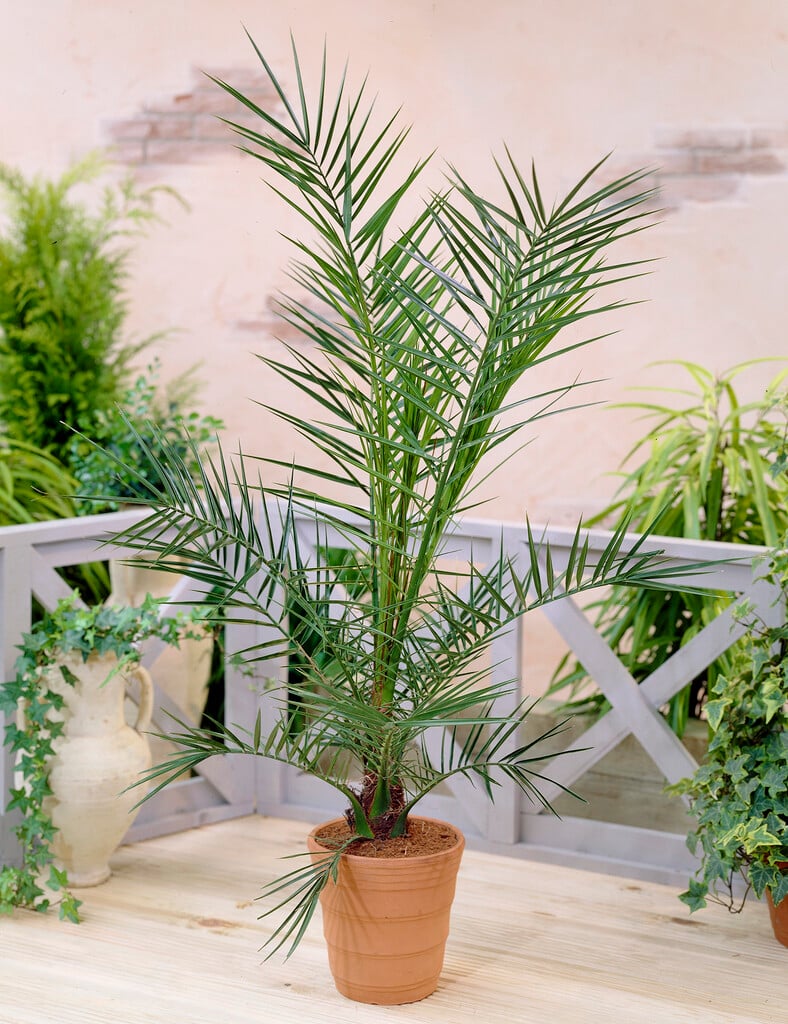Phoenix canariensis
Canary Island date palm
A tree-like palm to 15m or more, with a stout trunk and spreading deep green leaves to 5m in length, pinnately divided into many linear leaflets; drooping panicles of creamy-yellow flowers, followed by reddish-yellow fruits
Size
Ultimate height
Higher than 12 metresTime to ultimate height
20–50 yearsUltimate spread
Wider than 8 metresGrowing conditions
Moisture
Well–drainedpH
Acid, NeutralColour & scent
| Stem | Flower | Foliage | Fruit | |
| Spring | Green | |||
|---|---|---|---|---|
| Summer | Cream Yellow | Green | ||
| Autumn | Green | Red Yellow | ||
| Winter | Green |
Position
- Partial shade
Aspect
South–facing or West–facing
Exposure
Sheltered Hardiness
H2Botanical details
- Family
- Arecaceae
- Native to GB / Ireland
- No
- Foliage
- Evergreen
- Habit
- Bushy
- Genus
Phoenix are evergreen palms with solitary or clustered stems and narrowly oblong, pinnate leaves with linear segments, and drooping panicles of yellow flowers followed by fleshy ellipsoid fruits
- Name status
Correct
- Plant range
- Canary Islands
How to grow
Cultivation
Grow under glass or as a houseplant in a peat-free, loam-based compost in bright indirect light. When in growth water moderately and feed with a balanced fertiliser once a month. Water sparingly in winter. If moved outside during summer, locate in a sunny sheltered position with some midday shade
Propagation
Propagate by seed sown at not less than 25°C
Suggested planting locations and garden types
- Patio and container plants
- Architectural
Pruning
No pruning required
Pests
May be susceptible to glasshouse red spider mite, thrips, mealybugs and scale insects
Diseases
Generally disease-free
Love gardening
Sign up to receive regular gardening tips, inspiration, offers and more
View our Privacy Policy
Get involved
The Royal Horticultural Society is the UK’s leading gardening charity. We aim to enrich everyone’s life through plants, and make the UK a greener and more beautiful place.

